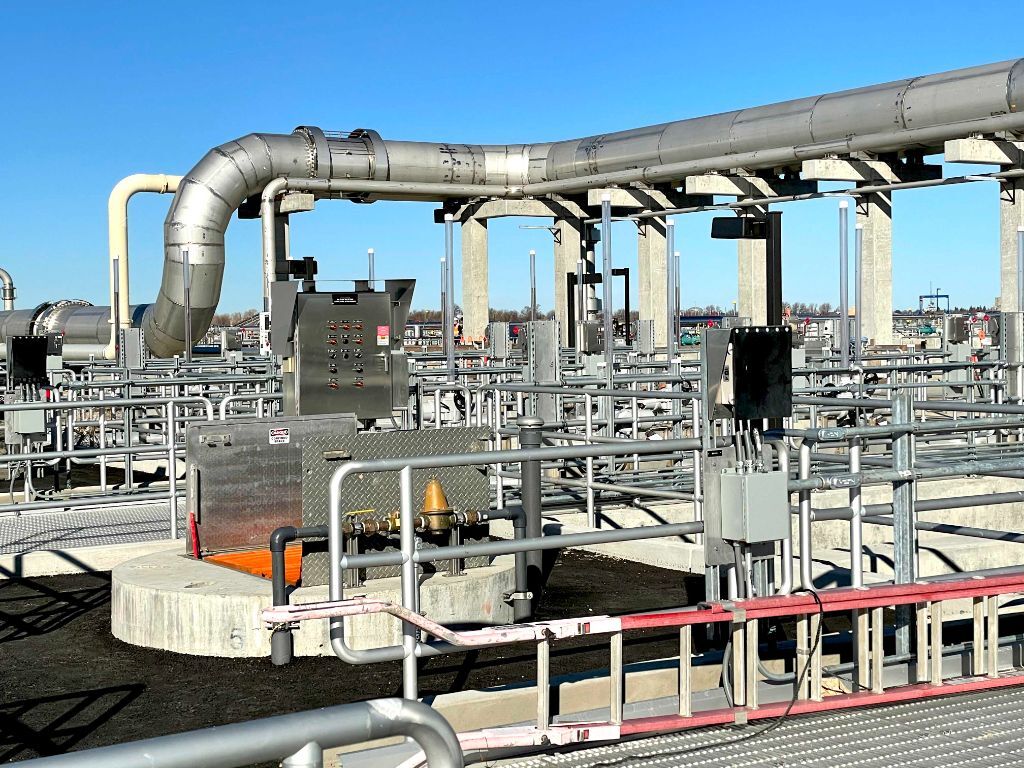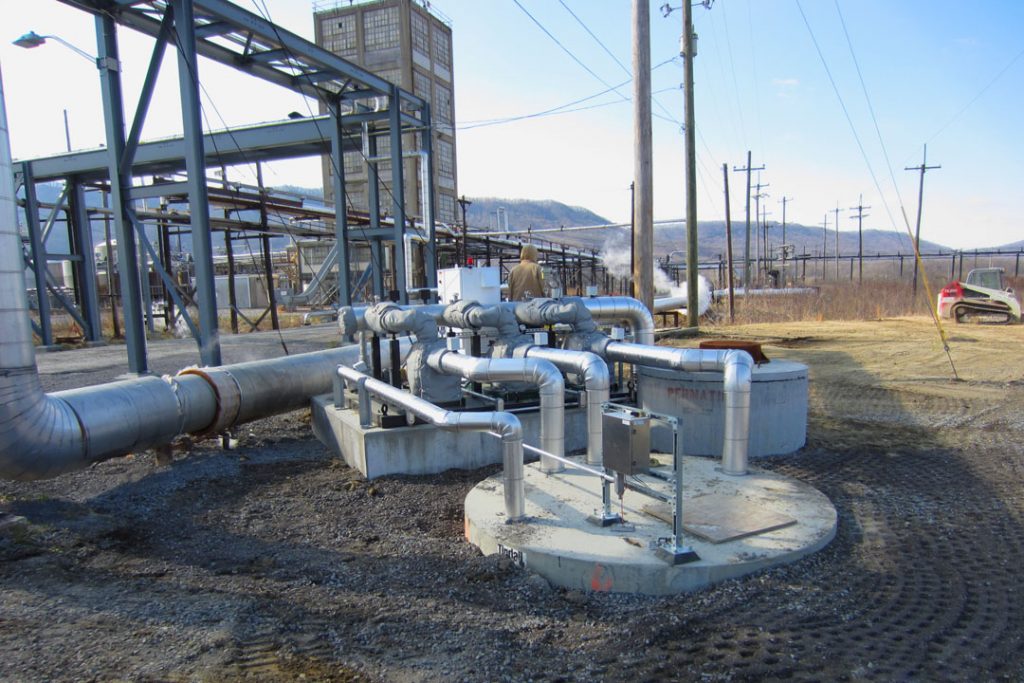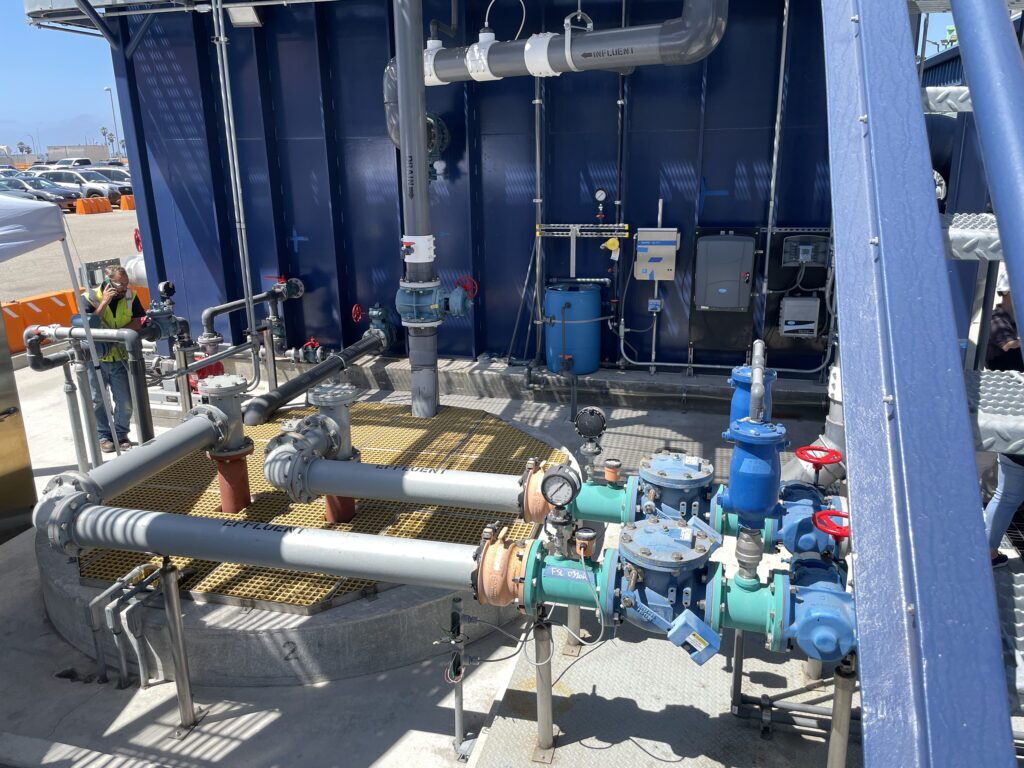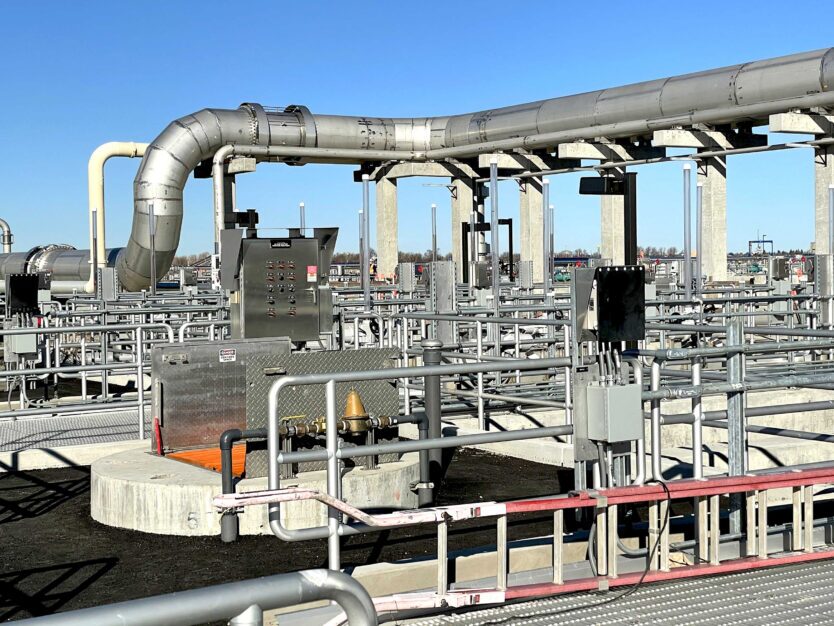Combined Cycle power generation pumping system projects are a critical piece of the energy infrastructure across the United States. A combined cycle power plant generates electricity through both a gas turbine and a steam turbine, which increases efficiency by utilizing the waste heat from the gas turbine to generate steam for an additional power cycle. Essentially it produces more electricity with the same amount of fuel.
The combined cycle power generation uses natural gas and a heat recovery steam generator (HRSG) to generate power. This process requires significant amounts of water for operation. Water used in this process gets super-heated and becomes corrosive. If the water is not treated it can damage components throughout the system.
Each HRSG and power generation pumping system has its own unique needs from the temperature of the water to handling inlet lines or pumping to force mains for reuse circulation or treatment.
It’s important to specify and integrate heat resistant components that stand up to the water conditions for this application.

Romtec Utilities Combined Cycle Power Generation Pumping Systems
At Romtec Utilities, we cover the complete scope for these systems by providing the design, manufacture, and supply of pumping systems that meet the needs of these combined cycle power plants.
Starting with design, engineers at Romtec Utilities go over all the preliminary design aspects of the pumping system such as flow rate, total dynamic head and temperature. The plans are put together and the components are selected according to these considerations then submitted for approval.
After approval of the design, Romtec Utilities orders all the components for the system and prefabricates as much of the system as possible for easy and quick installation on site. This prefabrication work by Romtec saves the owner time and money at installation. It also allows us to test the system before it arrives on site, making sure everything is in order.
Romtec Utilities electricians also prepare the control panel with control options that were selected by the owner and operators to operate their specific system and to integrate with existing SCADA.
As power demand continues to escalate, power generation pumping applications are increasing. We meet the needs of design/build power generation firms at a high level as we’re able to handle the entire system from design and supply, to commission and training on operations.
We are the single source team that can complete the entire system and hand it off ready to operate at the site of the combined cycle power generation plant.

Kings Mountain Energy Center HRSG Blowdown Pumping System
The Kings Mountain Energy Center in North Carolina needed an HRSG blowdown pumping system for the power plant.
The facility is a 475MW natural gas-fired combined-cycle power plant in Cleveland County. The energy center features an advanced Mitsubishi Hitachi M501GAC combustion turbine generator, a Vogt Power International supplementary fired heat recovery steam generator (HRSG) and a Toshiba America Energy Systems steam turbine generator.
Gemma Power Systems was the EPC Contractor who built the power plant.
A new HRSG blowdown pump station required three industrial pump stations to provide water for its processes. This HRSG blowdown pump station needed to handle extreme pumping conditions.
The pumps were engineered outside the wet well in a vertical configuration to prevent damage from exposure to hot, caustic water created in the HRSG blowdown process.
This system uses Goulds 7.5 hp pumps in a duplex configuration to meet the high pumping rate required to handle the blowdown water.
This project also ran parallel to another HRSG blowdown pumping project for Gemma at their Middletown Energy Center.
Construction of a new combined cycle power plant required three pump stations for the operation of its HRSG system. The stations are built to handle these harsh conditions while collecting and discharging untreated water into the on-site treatment facility.

Colusa Generating Combined Cycle Power Generation Pump Station
The Colusa Generating Station Project is a 660 MW facility consisting of two General Electric 7FA combustion turbines, two fired heat recovery steam generators, one General Electric D11 steam turbine and other BOP systems and facilities for a complete fully operational 660 MW combined cycle facility.
Pacific Gas and Electric Company (PG&E) needed three new lift stations as part of the construction of the Colusa Generating Station.
Gemma was the general contractor for this project. These three package lift stations were designed to meet medium flows of industrial process water with added low flows of industrial stormwater and wastewater.
Submersible centrifugal pumps in a duplex configuration were specified to meet the peak flows and water chemistry identified for each pump station.
The facility is classified as zero liquid discharge which includes a water treatment system and air-cooled condenser for cooling water.

Power Generation Plant Pump Stations
As the power grid in America continues to expand and require more power generation, power plants like the combined cycle power generation are an efficient way to produce more power with the same amount of energy.
At Romtec Utilities, we are here to help design a system that will be able to pump in these caustic environments. Understanding how the HRSG process works, and the amount of water needed to operate is essential to the design of the system to meet these extreme pumping conditions.
For the longevity of the system, it’s critical to specify and integrate heat resistant components that stand up to the water conditions for this application.
Whether it’s a combined cycle power plant or a new power plant involving hydrogen, biomass, renewable fuels, or cogeneration we can supply pumping systems that will help with the operation of the power plant. Whether that is HRSG blowdown process or another process in the power generation plant, we are your single source provider that can design, manufacture, and supply a complete pumping system that meets the needs of the project and integrates with the existing overall system for a cohesive design and operation.

